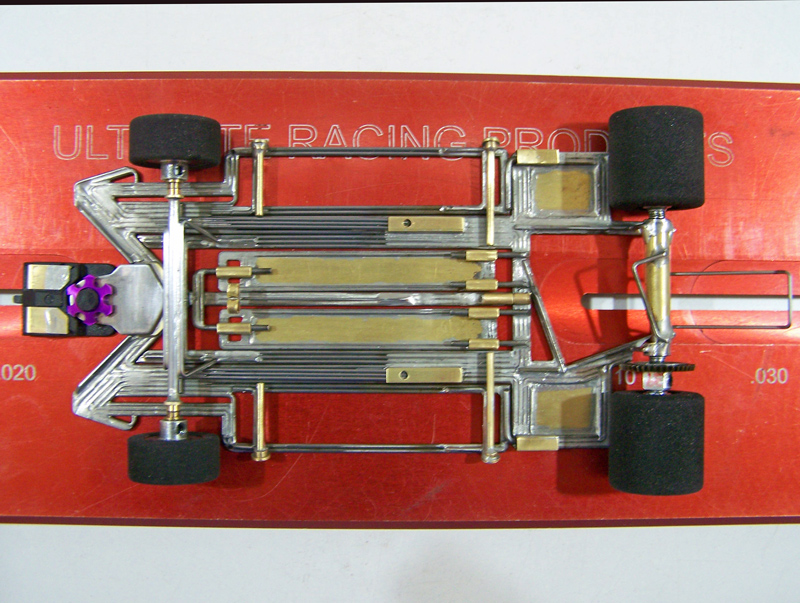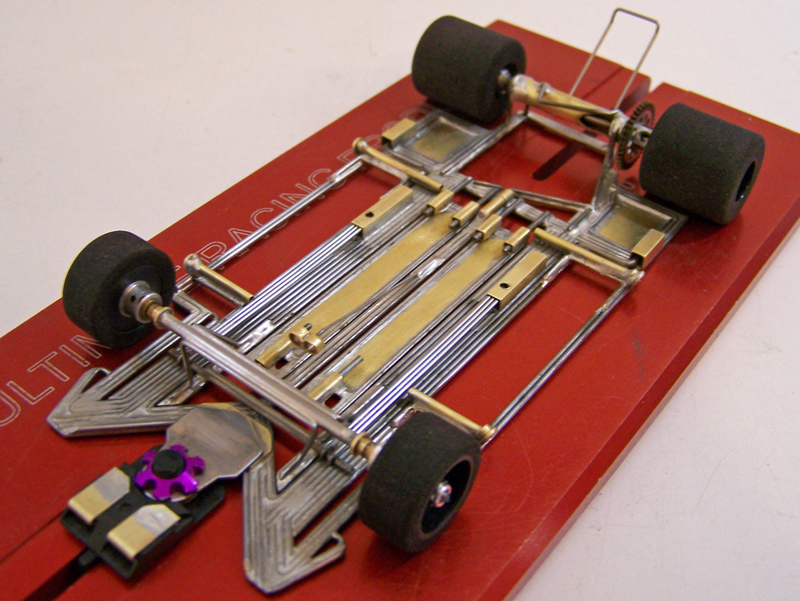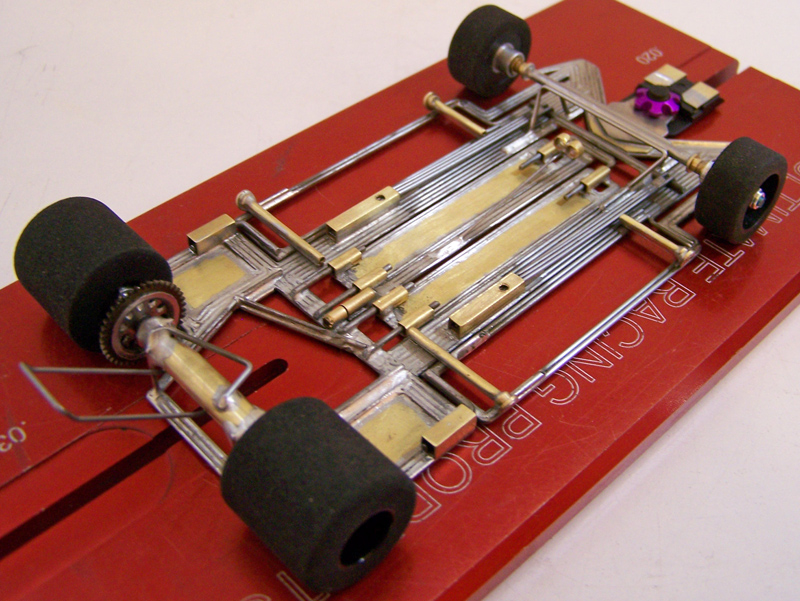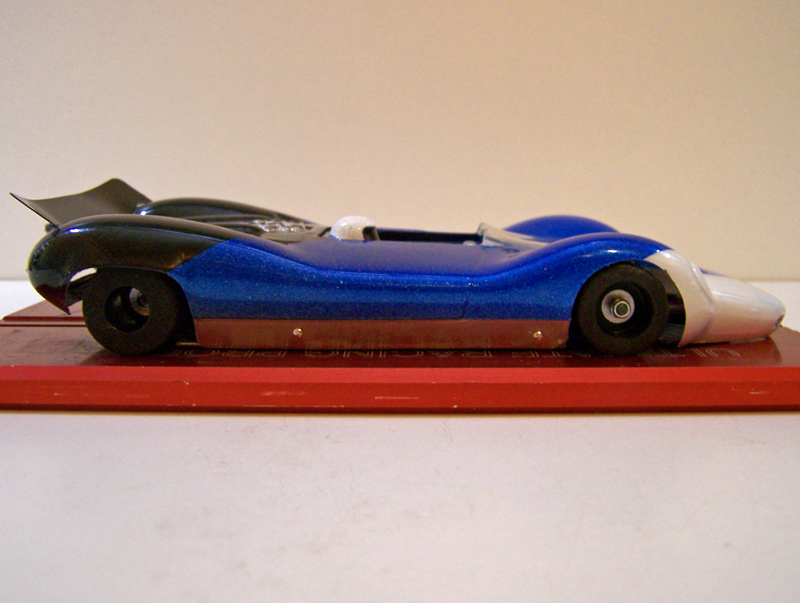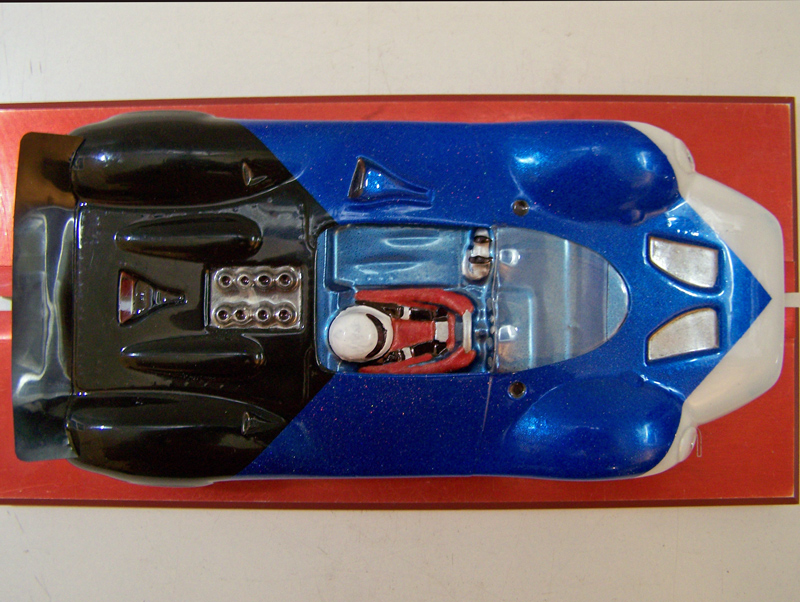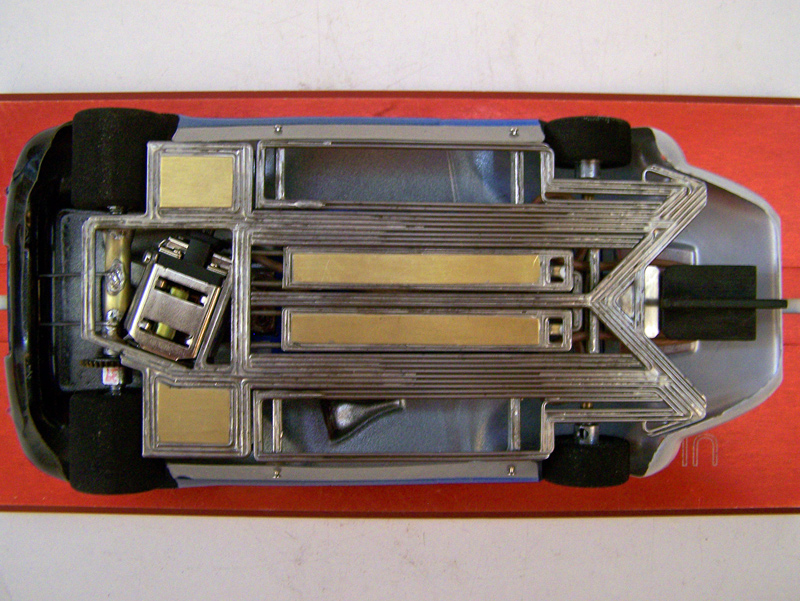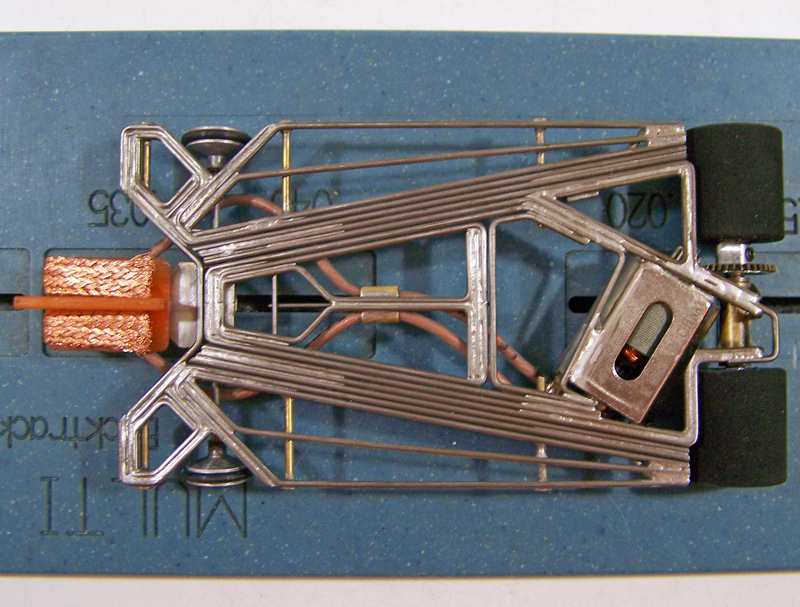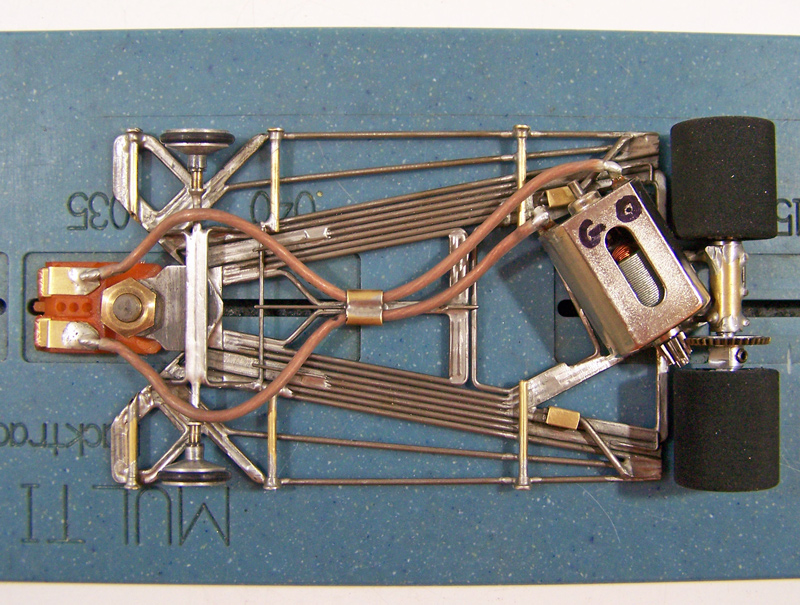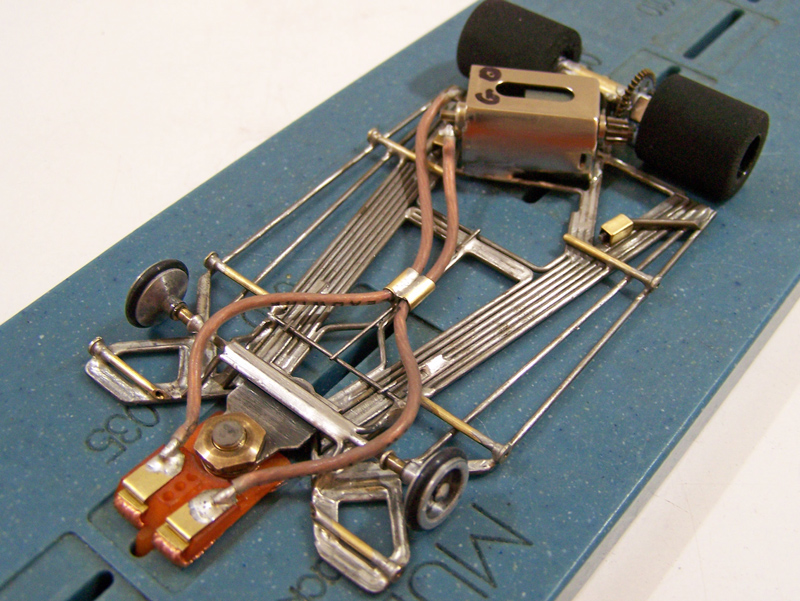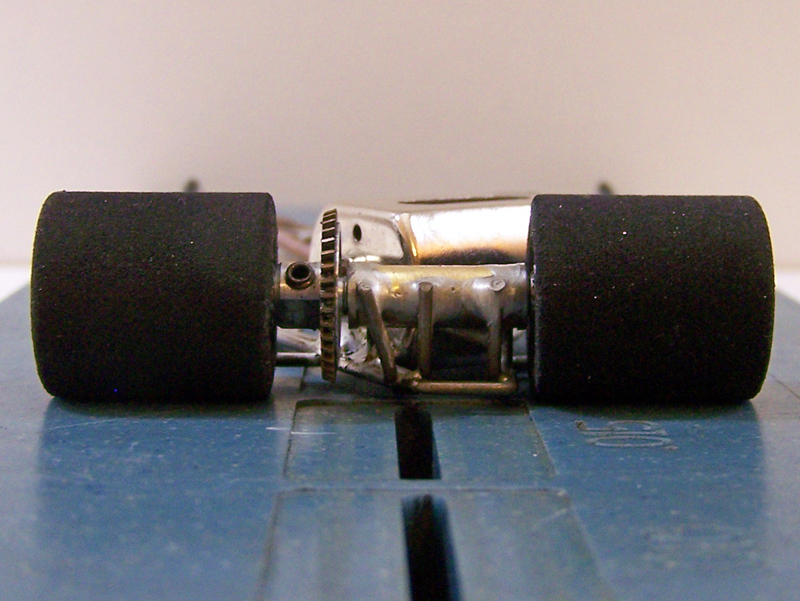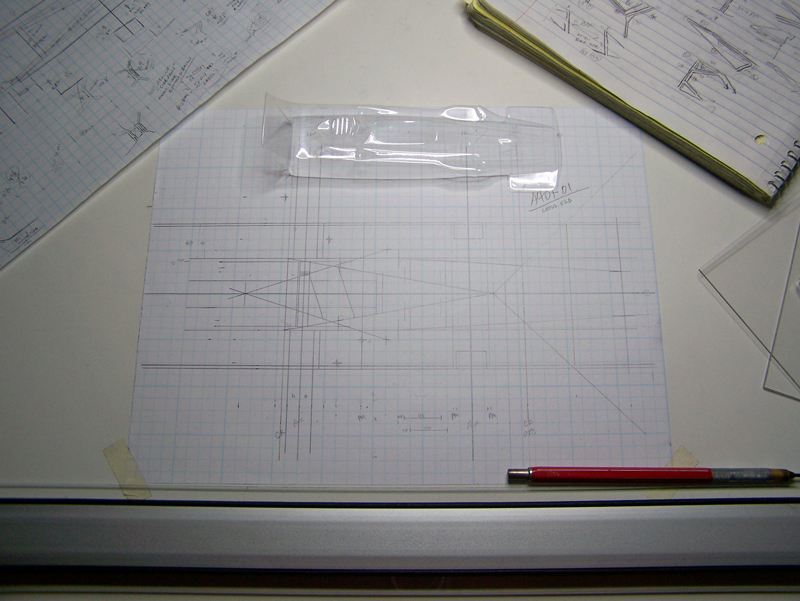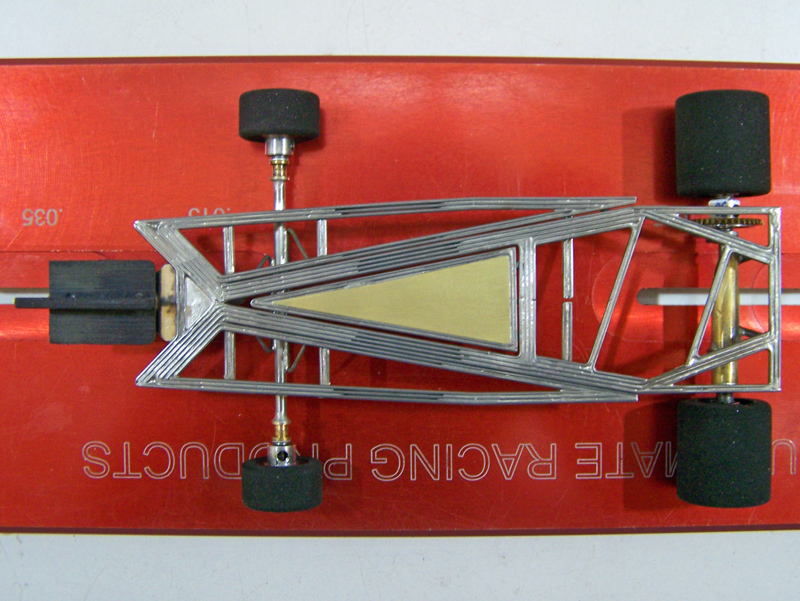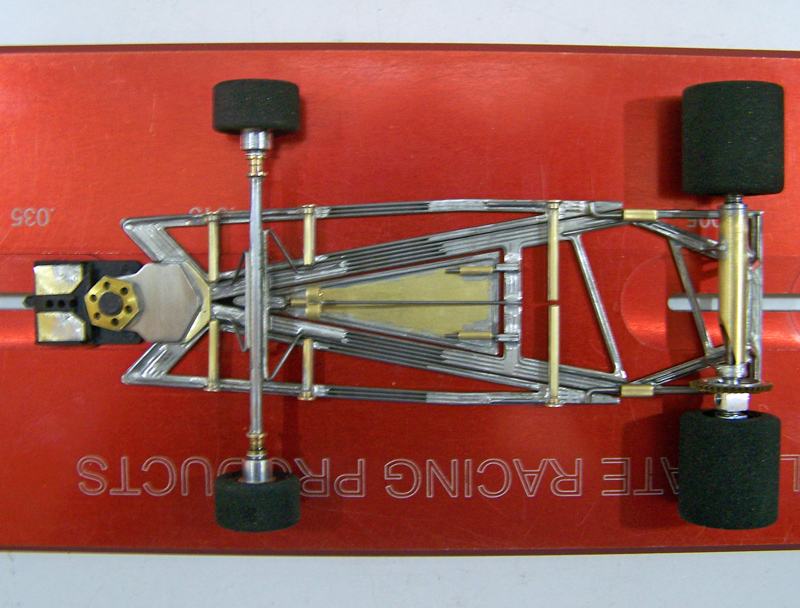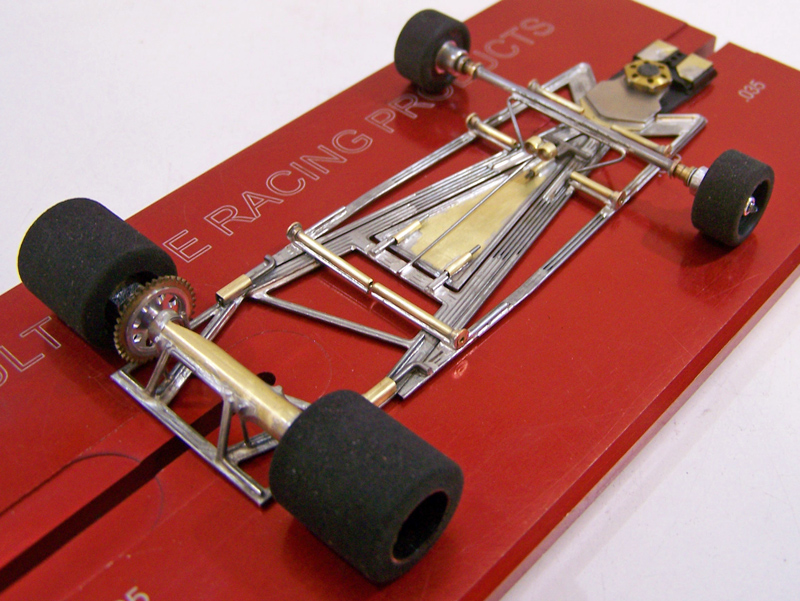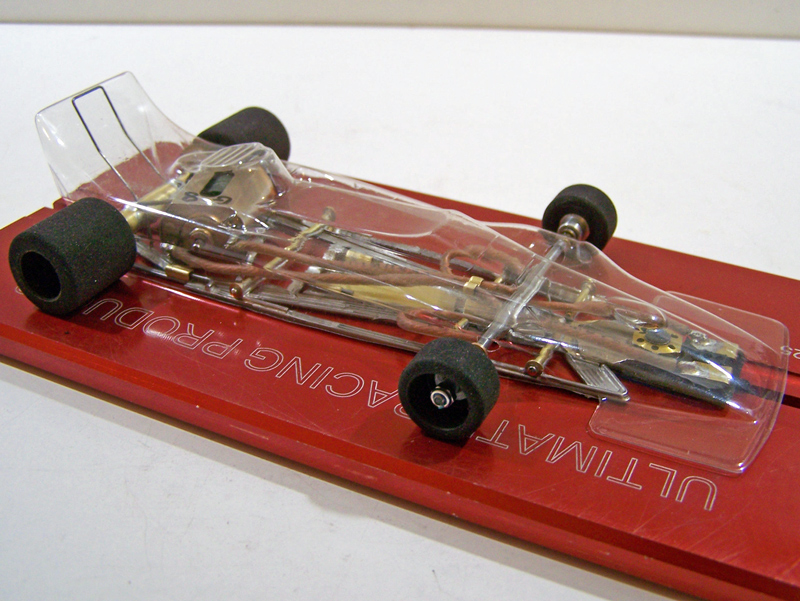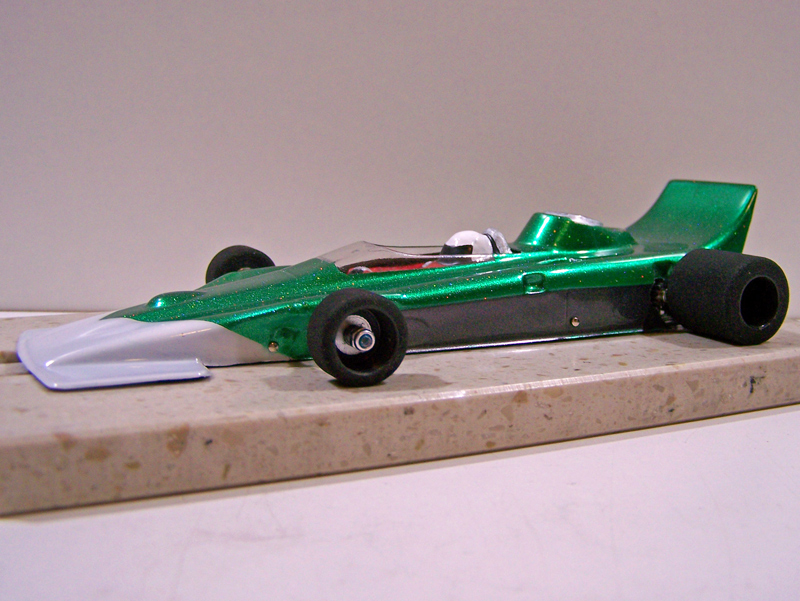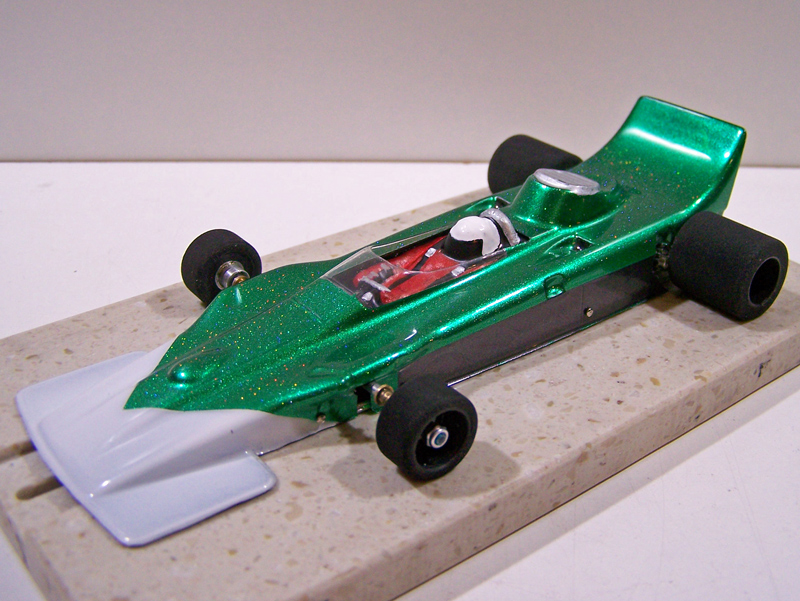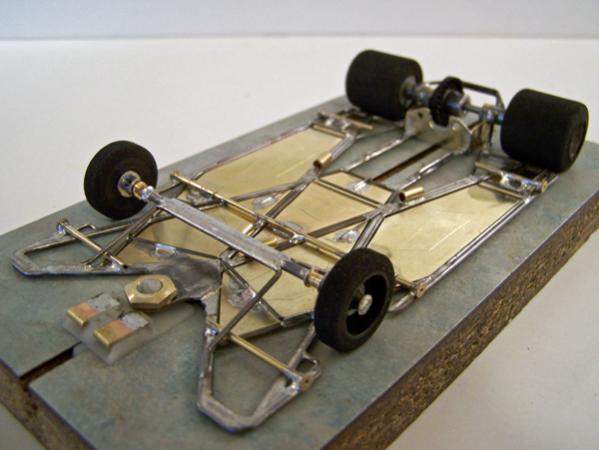1403-S01; Porsche Comes to Shove…
In the wise words of Commander Cody, “A whole lotta things that I never done, but I ain't never had too much fun.”
Besides myself, a lot of other 60’s slot car miscreants had the Russkit Porsche Carrera 6 way-way-back in the day. I remember the first time I saw one in the display counter at my local slot car raceway, resplendent in its packaging, I had to have it. Since I had already signed my life away into indentured servitude to my parents in order to maintain my slot car habit, I was more than willing to throw in some additional labors (and that was a lot of wooden fence that needed repainting…) to get that Russkit Porsche Carrera 6 for myself…
And when I got it, it was the most magnificent slot car ever… It was a moment of slot car rapture…
Yeah, well, it was the 60’s slot car era. As was the custom of the times, subsequent bastardization and cannibalization would eventually lead to the Russkit Porsche’s relegation to some long-forgotten oblivion, so that now, with the repressed reality of its desecration, it survives only in my memory as that image of its initial pristine presentation…
Nostalgia versus reality. Whatever.
I have this repop of the Lancer Porsche Carrera 6, or 906, body here for which I had no intention of tracking down a Russkit Carrera Series chassis and sundry other resto-correct parts to rebuild that car of yesteryear so I can get drunk on the dregs of some darkened distant paradise of lost youth and selective memory… Besides, I’d probably just hack the thing up again…
Okay, so no resto-build. A scratchbuild chassis then... Okay, but this chassis would also not be a period-correct scratchbuild, instead being another contemporary conglomeration something-or-other, preferably something I haven’t built before. However, I would give this chassis build one design concept homage towards the memory and honor of that old Russkit Porsche Carrera 6 from so long, long ago…
It’ll be a sidewinder.
Back in that dim dark past, after my banishment from the kids’ races and being taught to scratchbuild so I could race with the adults, though more accurately would be described as “the old kids”, I recall scratchbuilding only one sidewinder chassis that I also recall was an utter disaster, the taller narrower rear tires being too much of a disadvantage against the in-line drive frames of the time. Returning to the present, this time I don’t have to consider the competition aspect of this car, as the possibility of someone coming up with a “sidewinder class” in the ever popular retro-world is about slim-to-none. This car can be what it will be… which got me thinking… which is rarely ever a good thing…
The plan became to build a sidewinder drive using design elements from the anglewinder frames of the late 60’s: drop arm, parallel main rails, plumber (lateral) hinged side pan rails with longitudinal hinged side pans. Another more personal homage to that time frame would be to have front wings, a design element item I incorporated for the first time onto my last few anglewinder chassis builds in early 1969 (before that long hiatus from slot car fun for me until my return in the mid 90’s, that interim period during which I am eternally grateful we did not have cell phones with cameras…). To bring it all into a more contemporary build style all these throw-back chassis components would be laid out using 0.039” wire framing, and using 0.032” brass plate as framed filler (as opposed to being structural components) to give it that semi-“slab-o-brass lead-sled” look of yesteryear. Of course the motor of choice would be another of the PS Puppy Dogs laying around here; the Porsche Carrera 6 repop body is only 2.75” wide, so I figured with the P-Dog and gears shoe-horned in there I could get away with using 0.700” wide rear tires, providing my math wasn’t screwed up…
…So tires were a major consideration, since I was limited to 0.700” wide rears, but I had some ProTrack 0.700 wide drag rears on 0.625” diameter hubs that I could easily cut down to 0.875”, while still getting the gears and motor to fit between (and if my math was wrong, always a possibility, they could be just as easily narrowed). The front tires were more a matter of aesthetics, and after trying various optical options opted for the 0.375”w x 0.750“d JK retro F1 fronts, which are needlessly wide, but just looked “right” to me.
As for the Porsche Carrera 6 body, I’d cut it down getting it as low as possible while keeping the overall appearance and allowing the tires to fit without flaring the wheel wells. I don’t have one of those nice interiors that were made for this body and couldn’t find one, so I’d have to throw in some slap-dash interior until I do, if ever. Then there was that whole painting-thing… Yeah, yeah, I could paint it silver like the old Russkit car… or paint it to match one of the actual cars campaigned back in the day, sure, sure… well…
Wendy, I’m home…








The chassis came out with the aesthetic I wanted. Cool beans. The drop arm doesn’t drop very much, approximately 0.025” between the guide tongue and the cross member of the main frame under it. The combination of the front wings and side pan rails was a flash-back for me since they reminded me of those last few anglewinder chassis I built (the last two never becoming complete cars) fifty years ago; those were the first chassis where I made front wings constructed to fit the specific body for which the chassis had been built, just as on this one. Back in the day it just would have been thicker slabs-of-brass… The chassis had limited space under this narrow Porsche body to build the typical tight-fitting motor box I like to incorporate on my chassis, so in this case the motor just sits atop the framing; and, though I considered it, there was no need for a motor bracket; simple enough. Tolerances around the motor were pretty tight as it was, and as it was the forward rear-axle tube uprights took me three tries on one and two on the other to get them to clear the motor properly, which wasn’t all that bad, really.
Those who pay attention to my builds (you poor suffering misbegotten creatures) may have wondered why this chassis is framed using 0.039” wire instead of the 0.032” wire I use on pretty much all of my other chassis these days; from my past experience it was just a case of foreseeing possible loading problems if I used 0.032” wire with the length and width of the straight/parallel main rails in this chassis’ design.
The 1403-S01 chassis design is intentionally one that I can adapt to build not only as a sidewinder, but as an anglewinder or in-line drive as well. The basic 1403 design can also be easily adapted to fit a range of bodies, which considering the number of bodies I’ve got around here is never such a bad idea.
Numbers stuff: Wheelbase is 3.8125”, rear axle to guide pivot is 4.625”, making the guide lead 0.8125”. I used current retro-scratchbuild rules for front and rear chassis clearances (0.050” and 0.015” respectively) since it just seemed like the “right” thing to do despite this car having no applicability in any current rule sets. All buttoned up and ready to run it weighs 113.0 grams, which ain’t bad all things considered.
As for the body, hey, it’s silver… well, mostly silver… bastardized with some CMF3 chevron livery white and black fore and aft, gun metal for the side pods, anodized silver for the headlamp covers, and bright gun metal interior. Speaking of which, for now the interior ain’t nothing special, but it’ll do. And, yes, I know the driver is supposed to be on the other side, but, as I said, it’ll do.
So the final piece of this pointless puzzle will be to see if this sidewinder scratchbuild would be as bad as that previous lone attempt I made those 50-plus years ago… It can’t be worse, that I know. In essence, all this one has to do is get run more than just a handful of laps, before getting unceremoniously thrown back in the box for future cannibalization, and it will have exceeded the lifespan and fate of that dismal sidewinder scratchbuild chassis from yesteryear… So much for nostalgia…
Regardless, this car was a highly enjoyable build, and a welcome break from the more repetitive predictability of the 1237-Series build progression, which I will be getting back to... Still better than a stick in the eye.
Rick / CMF3




















